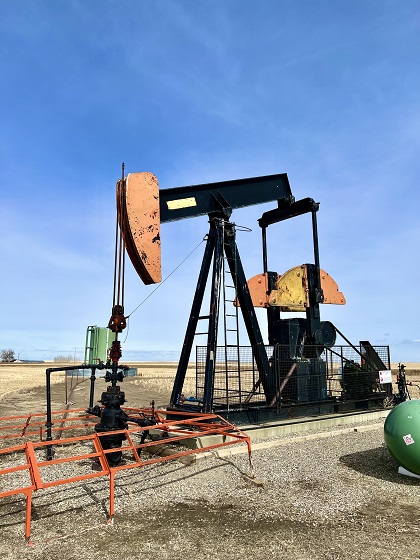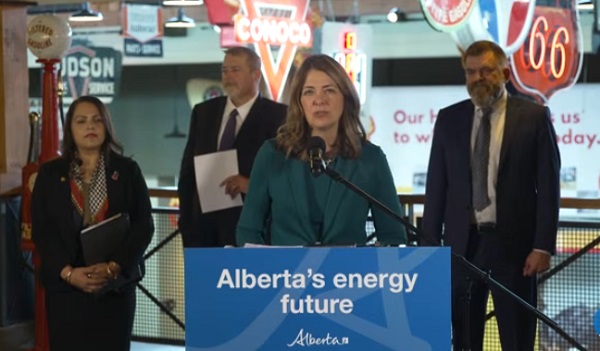Canadian Energy Centre
Indigenous communities shut out by B.C. tanker ban want another chance

From the Canadian Energy Centre
By Deborah Jaremko and Will Gibson
“Canada’s Indigenous communities need projects, not lawsuits that hold them up”
From the outset, projects must unite leadership from proponents, governments and affected First Nations
The head of the National Coalition of Chiefs (NCC) is calling for the repeal of the oil tanker ban on B.C.’s north coast as Canada seeks “nation-building” projects to strengthen economic independence.
With short shipping times to hungry Asian markets, ports like Prince Rupert or Kitimat offer a strong business case – but only if the tankers can dock.
“No proponent is going to look at investing in a pipeline to the north coast with that kind of legislation in place,” says NCC founder and CEO Dale Swampy.
Formed in 2016, the NCC is a group of pro-development First Nation leaders including some who were equity partners in the cancelled Northern Gateway pipeline from Edmonton to Kitimat.
Canada’s Indigenous communities need projects, not lawsuits that hold them up, he says.

Original map of the proposed Northern Gateway Pipeline, submitted to regulators as part of a preliminary information package in October 2005. Map courtesy Canada Energy Regulator
Northern Gateway and the tanker ban
The tanker ban and Northern Gateway are intrinsically linked.
The moratorium contributed to the loss of Indigenous ownership stakes and an estimated $2 billion in economic opportunity for First Nations and Métis communities.
“We have consistently spoken up against this legislation, which directly affects the ability of our communities to participate in developing resources,” Swampy says.
With the aim to diversify markets for Canadian oil by reaching customers in Asia, Enbridge announced Northern Gateway in 2004.
The project’s 7,800-page regulatory application to the National Energy Board (NEB) – including more than 1,600 pages specific to marine safety – followed in May 2010.
In December 2013, after extensive assessment and public hearings, including with Indigenous communities, a three-member Joint Review Panel from the NEB and the Canadian Environmental Assessment Agency recommended the project to go ahead.
In June 2014, the federal government approved Northern Gateway with 209 conditions, including a requirement to fulfill over 400 voluntary commitments, many tied to marine safety.
After receiving approval, Northern Gateway’s management team and the project’s Aboriginal Equity Partners proposed an increase in Indigenous ownership from 10 per cent to 33 per cent.
They also created a joint governance structure where the communities and the company would have an equal voice.
The modified project would also incorporate First Nations and Métis environmental stewardship and monitoring using traditional science.
Meanwhile, legal actions were underway by environmental groups and Indigenous communities outside the equity partners.
By December 2014, the Federal Court of Appeal had consolidated multiple cases challenging the project’s approval.
Blocking the Northern Gateway pipeline and enacting a moratorium on oil tanker traffic on B.C.’s north coast became cornerstones of the Liberal Party’s 2015 election platform.
In November 2015, just a week after being sworn in, former Prime Minister Justin Trudeau instructed his transport minister to “formalize” the ban, a major setback for Northern Gateway.
Five months later, in June 2016 the Federal Court of Appeal overturned the government’s approval for the project, ruling that Canada had failed to fulfill its constitutional duty to consult Indigenous communities.
In November 2016, Trudeau officially rejected Northern Gateway, devastating hopes for the bands that would have become equity partners.
“Thirty-one of the 40 First Nations and Métis communities who were located on Northern Gateway’s right-of-way supported the pipeline, but a couple of communities backed by environmental groups were able to stop the entire project,” Swampy says.
“That’s not fair or democratic.”
In May 2017, Bill C-48, also known as the Oil Tanker Moratorium Act, was formally introduced in the House of Commons.
Indigenous communities stripped of opportunity
At the time, Swampy told the Financial Post that the communities saw the decision to reject Northern Gateway as political and not acting in the best interests of Canadians.
“They weren’t asked about the financial effect, the lost employment,” he said.
The implications of the tanker ban go far beyond the West Coast, Indian Resources Council CEO Stephen Buffalo told the Standing Senate Committee on Transport and Communications in March 2019.
Buffalo joined Swampy and other Indigenous leaders to speak to the committee as part of its consideration of Bill C-48.
Representing more than 130 First Nations that produce or have the potential to produce oil and gas, he said community prosperity is closely tied to the sector.
“The industry is suffering greatly from the lack of pipeline access…We need access to new markets to obtain fair value for our oil resources,” Buffalo said.
“We are struggling with addictions and depression, and people are losing hope. If we are ever going to make faster progress on these issues, our First Nations communities need more own-source revenues to fund cultural programs, sports programs or health activities for our young people,” he said.
“We need more jobs available for our people. We need them to earn good wages — wages that can support their families. Right now, Bill C-48 and other policies threaten all of that for us.”
Buffalo questioned the necessity of the tanker ban.
“I think all First Nations would support development of strict regulations that protect the environment, but that’s different from arbitrarily stopping just Canadian oil tanker activity,” he said.
The Senate approved the tanker ban and it became law upon Royal Assent on June 21, 2019.
Shifting times and new pipelines
Six years and the threat of U.S. tariffs later, the view on Canadian oil pipelines — and, potentially, the tanker ban itself — is shifting.
Growing public support for pipelines in recent opinion polls has encouraged Swampy.
So, too, has the change in attitudes towards development by coastal First Nations that have experienced the benefits of working with industry.
“Many of the coastal First Nations in northwestern B.C. are either building or looking at building LNG facilities. They appreciate the fact prosperity can be gained by partnering on these projects,” he says.
The NCC wants to see that same opportunity for the communities that would have benefited from Northern Gateway, through a new oil pipeline proposal to either Kitimat or Prince Rupert.
“We are hoping providing some certainty with Indigenous consultation and participation will give proponents some certainty they have a willing partner,” Swampy says.
To avoid lawsuits that delay or cancel projects and drive developers out of Canada, Swampy says agreements must, from the outset, unite leadership from proponents, governments and affected First Nations.
“We hope governments hear our message: we want projects, not lawsuits,” he says.
“Communities don’t need a cheque or a handout. They need the opportunity to participate in a meaningful way.”
Alberta
Alberta’s E3 Lithium delivers first battery-grade lithium carbonate
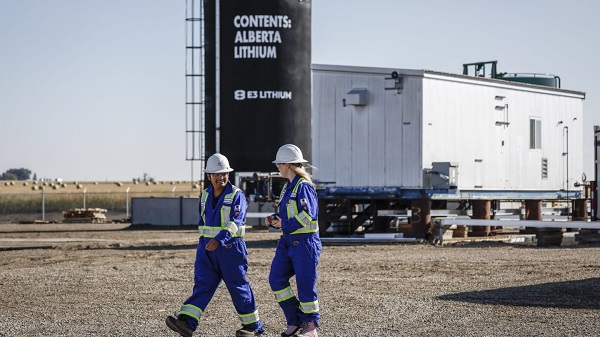
E3 Lithium employees walk through the company’s lithium pilot plant near Olds
From the Canadian Energy Centre
E3 Lithium milestone advances critical mineral for batteries and electrification
A new Alberta facility has produced its first battery-grade lithium carbonate, showcasing a technology that could unlock Canada’s largest resources of a critical mineral powering the evolving energy landscape.
In an unassuming quonset hut in a field near Olds, Calgary-based E3 Lithium’s demonstration plant uses technology to extract lithium from an ocean of “brine water” that has sat under Alberta’s landscape along with oil and gas for millions of years.
Lithium is one of six critical minerals the Government of Canada has prioritized for their potential to spur economic growth and their necessity as inputs for important products.
“The use for lithium is now mainly in batteries,” said E3 Lithium CEO Chris Doornbos.
“Everything we use in our daily lives that has a battery is now lithium ion: computers, phones, scooters, cars, battery storage, power walls in your house.”
Doornbos sees E3 as a new frontier in energy and mineral exploration in Alberta, using a resource that has long been there, sharing the geologic space with oil and gas.
“[Historically], oil and water came out together, and they separated the oil from the water,” he said.
“We don’t have oil. We take the lithium out of the water and put the water back.”
Lithium adds to Canada’s natural resource strength — the country’s reserves rank sixth in the world, according to Natural Resources Canada.
About 40 per cent of these reserves are in Alberta’s Bashaw District, home to the historic Leduc oilfield, where E3 built its new demonstration facility.
“It’s all in our Devonian rocks,” Doonbos said. “The Devonian Stack is a carbonate reef complex that would have looked like the Great Barrier Reef 400 million years ago. That’s where the lithium is.”
Funded in part by the Government of Canada and the Government of Alberta via Alberta Innovates and Emissions Reduction Alberta (ERA), the project aims to demonstrate that the Alberta reserve of lithium can be extracted and commercialized for battery production around the world.
E3 announced it had produced battery-grade lithium carbonate just over two weeks after commissioning began in early September.
In a statement, ERA celebrated the milestone of the opening of the facility as Alberta and Canada seek to find their place in the global race for more lithium as demand for the mineral increases.
“By supporting the first extraction facility in Olds, we’re helping reduce innovation risk, generate critical data, and pave the way for a commercial-scale lithium production right here in Alberta,” ERA said.
“The success from this significant project helps position Alberta as a global player in the critical minerals supply chain, driving the global electrification revolution with locally sourced lithium.”
With the first phase of the demonstration facility up and running, E3 has received regulatory permits to proceed with a second phase that involves drilling a production and injection well to confirm brine flow rates and reservoir characteristics. This will support designs for a full-scale commercial facility.
Lithium has been highlighted by the Alberta Energy Regulator (AER) as an emerging resource in the province.
The AER projects Alberta’s lithium output will grow from zero in 2024 to 12,300 tonnes by 2030 and nearly 15,000 tonnes by 2034. E3 believes it will beat these timeframes with the right access to project financing.
E3 has been able to leverage Alberta’s regulatory framework around the drilling of wells to expand into extraction of lithium brine.
“The regulator understands intimately what we are doing,” Doornbos said.
“They permit these types of wells and this type of operation every day. That’s a huge advantage to Alberta.”
Alberta
Halfway River First Nation makes history with Montney natural gas development deal
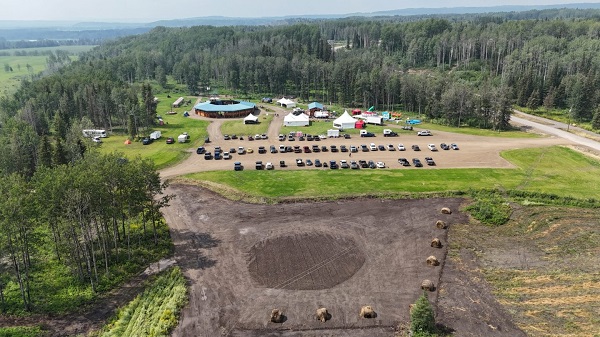
In northeast B.C., about 75 kilometres from Fort St. John, Halfway River First Nation sits in the heart of the Montney, one of North America’s largest natural gas plays. Photo courtesy Halfway River First Nation
From the Canadian Energy Centre
By Will Gibson
Greg Kist has seen plenty of change during more than three decades working in the energy industry. But the former executive with Petronas and Progress Energy has rarely experienced a history-making moment.
That happened in July 2024, when the B.C. government awarded the Halfway River First Nation what’s known as oil and gas tenure in the heart of the Montney play.
It’s an agreement that grants the Nation decision-making authority over the exploration and development of petroleum and natural gas resources on more than 34,000 hectares of Crown land in its traditional territory, located approximately 1,000 kilometres northeast of downtown Vancouver.
That agreement is now moving further into action with a deal between Halfway River-owned Tsaa Dunne Za Energy (TDZE) and ARC Resources.

Members of the Halfway River First Nation participate in a field tour with the BC Energy Regulator in June 2025. Photo courtesy BCER
The agreement, signed earlier this year, will see TDZE work with Calgary-based ARC to develop about 25 per cent of the tenured land.
The region is adjacent to ARC’s existing Attachie natural gas operations, which are rich in high-value natural gas liquids.
The company describes Attachie as one of its most profitable assets, which can be expanded thanks to the TDZE agreement.
“This land was deferred from development for more than two decades while sitting in the premier natural gas play in North America,” says Kist, one of TDZE’s managing executives.
“Unlocking it will generate all kinds of economic activity and royalties for the B.C. government that help pay for schools and health care. But it will also generate the same benefits for the Halfway River First Nation.”
ARC plans to integrate the new areas using existing roads, pipelines and other infrastructure from Attachie.
Developing the land will still require consultation with the Halfway River First Nation.

Drilling in the Montney play straddles the border between northeast B.C. and northwest Alberta. Photo courtesy ARC Resources
“This is very much about Tsaa Dunne Za Energy delivering the best return on this particular asset for its shareholders, which are the members of the Halfway River First Nation,” Kist says.
In addition to granting tenure to develop oil and gas on the land, the B.C. government and Halfway River have implemented a landscape planning pilot to mitigate the impacts of development on the Nation’s Treaty 8 rights and manage potential cumulative effects of new development.
“The tenure award and landscape planning pilot will help to ensure that oil and gas development in these areas is sustainable and managed in accordance with the values of the Halfway River First Nation,” Chief Darlene Hunter said in a statement.
Kist sees the agreement as a template for other governments, energy companies and First Nations to follow.
“This has the potential to be the model for cooperative development so that we can develop resources in the right way that benefits governments, First Nations and industry. I’m proud to be a part of this because everybody involved wins from this.”
-

 Artificial Intelligence1 day ago
Artificial Intelligence1 day agoThe App That Pays You to Give Away Your Voice
-

 Health1 day ago
Health1 day agoThe Religious Faith in Vaccines has been Challenged, Forcing New Studies and More Rigorous Standards
-
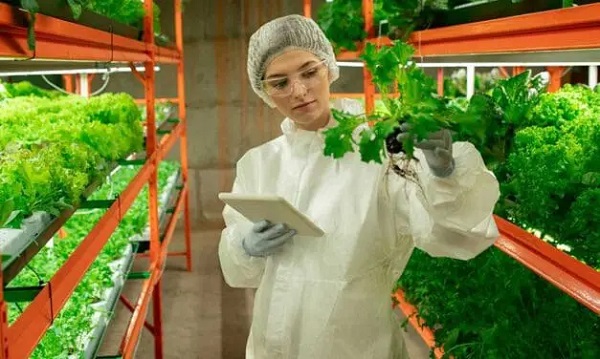
 Agriculture7 hours ago
Agriculture7 hours agoCarney’s nation-building plan forgets food
-

 Fraser Institute8 hours ago
Fraser Institute8 hours agoAboriginal rights now more constitutionally powerful than any Charter right
-

 Alberta9 hours ago
Alberta9 hours agoAlberta puts pressure on the federal government’s euthanasia regime
-
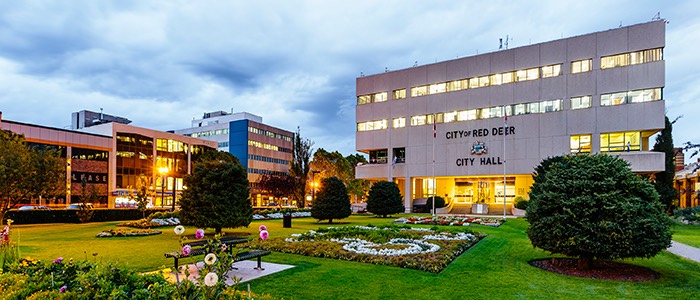
 Red Deer11 hours ago
Red Deer11 hours agoThe City or Red Deer Financial Troubles: The Role of Good Governance, Effective Policies and Key Performance Metrics.
-

 Health2 days ago
Health2 days agoDisabled man needs help as hospital continues to pressure him with assisted suicide
-
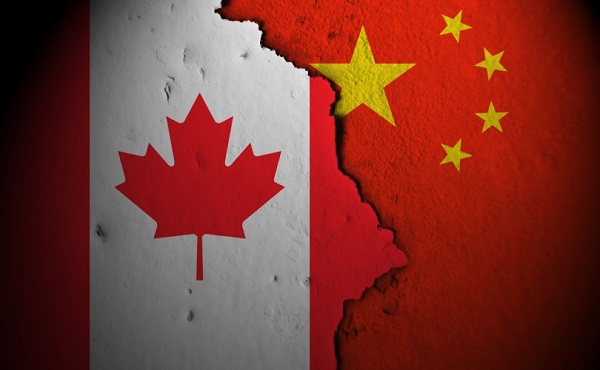
 Business2 days ago
Business2 days agoInquiry discloses Canada providing a reported $2.5 million in aid to Chinese universities





